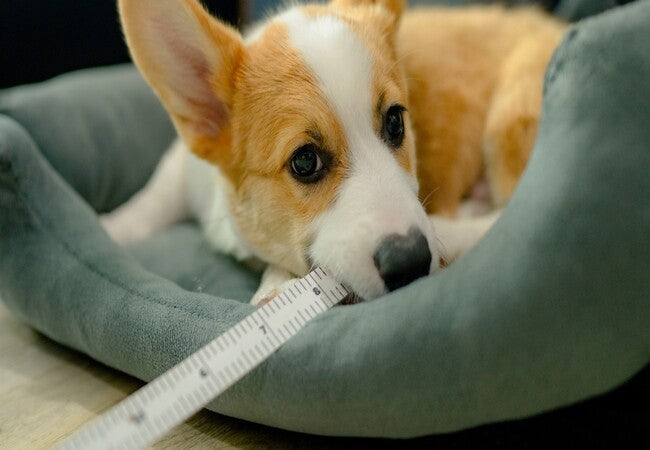Vet’s 2025 Guide to Canine Pica 🐶 Why Dogs Eat Non-Food Items & What To Do🩺

In this article
Vet’s 2025 Guide to Canine Pica 🐶 Why Dogs Eat Non-Food Items & What To Do🩺
By Dr. Duncan Houston BVSc
💡 Introduction
Pica is an eating disorder in dogs characterized by consuming non-food items—like cloth, rocks, dirt, plastic—posing serious health risks from obstruction, poisoning, or trauma.
1. What Is Pica?
Pica is defined as the persistent chewing or eating of non-nutritional substances such as wood, cloth, stones, rubbish, or soil. While puppies explore orally, pica in adults often signals medical or behavioral issues.
2. Recognizing the Signs ⚠️
Key indicators include:
- Frequent chewing or ingestion of cloth, dirt, rocks, plastic, etc..
- Vomiting, diarrhea, abdominal pain, gagging, and drooling after ingestion.
- Lethargy, loss of appetite, and possible systemic signs if obstruction occurs.
3. Causes of Pica 🧩
3.1 Medical causes
- Nutritional deficiencies (iron, zinc) or insufficient caloric intake.
- Gastrointestinal disease (malabsorption, parasites, EPI).
- Metabolic/endocrine issues—liver disease, diabetes.
- Anemia prompting geophagia.
- Neurological disorders or toxins.
- Medication side effects (e.g., steroids).
3.2 Behavioral causes
- Boredom, lack of exercise, and low environmental stimulation.
- Anxiety, stress, and separation-related behaviors.
- Compulsive disorders (repetitive chewing).
- Curiosity or oral fixation, especially in puppies.
4. Diagnosing Pica 🧪
- Full physical exam and detailed history regarding items ingested.
- Bloodwork for anemia, organ function, and nutrient levels.
- GI parasite screening, imaging (X-rays, ultrasound) for blockages.
- Behavioral assessment—consult a vet behaviorist if no physical causes are found.
5. Treatment & Management (2025) ❤️
5.1 Address Medical Causes First
- Treat nutritional deficiencies with diet correction or supplements.
- Manage GI/endocrine disease medically (parasites, EPI, liver therapies).
- Adjust medication if it's a trigger.
5.2 Behavior Modification & Enrichment
- Increase exercise, walks, and play to reduce boredom—especially in high-energy breeds.
- Provide puzzle toys, chew-safe items, and rotate them often.
- Train “leave‑it” and “drop‑it” commands; redirect chewing to approved items.
- Manage environment: secure laundry, waste, fencing, use baskets, and muzzles if needed.
5.3 Treat Anxiety & Compulsive Behaviors
- Consult a behaviorist; consider anti-anxiety tools (medication, pheromones).
- Use behavior modification therapy—counterconditioning and cessation techniques.
5.4 Emergency Care
- Act fast for choking/obstruction—immediate vet if abnormal behavior or vomiting.
- Surgical removal or endoscopy may be required.
6. Prevention Strategies 🔒
- Ensure a balanced, complete diet with vet-approved supplements.
- Increase exercise and complex enrichment daily.
- Teach and reinforce “leave-it/drop-it” commands.
- Remove access to unsafe items; supervise playtime.
- House training and crate training to reduce unsupervised access.
7. How Ask A Vet Supports You 🩺
- 24/7 triage for choking, GI distress, behavioral emergencies.
- Medication and deworming reminders and tracking.
- Photo uploads of behavior incidents and stool records.
- Behavior tracking, progress logs to share with vets.
- Training reinforcement tips, muzzle guidance, and environment checklists.
🔍 Key Takeaways
- Pica is potentially life-threatening, causes range from medical to behavioral.
- Medical issues must be ruled out before behavioral interventions.
- Behavioral pica is managed with enrichment, training, and environmental control.
- Persistent or compulsive cases may require veterinary behaviorist support.
- Ask A Vet offers vital support in emergencies, monitoring, and behavior change.
🩺 Conclusion ❤️
Pica may start as irritating but can escalate to dangerous. In 2025, a multimodal treatment plan—medical care, training, enrichment, and support from Ask A Vet—helps dogs safely unlearn pica and thrive. 🐾✨
Dr Duncan Houston BVSc – compassionate veterinary care blending behavior insight with medical precision.
Visit AskAVet.com and download the Ask A Vet app for 24/7 guidance, behavior tracking, training support, and emergency alerts to beat pica and keep your pup safe. ❤️






